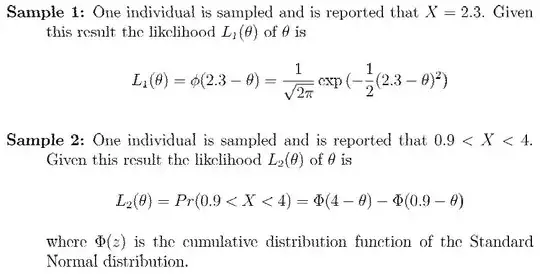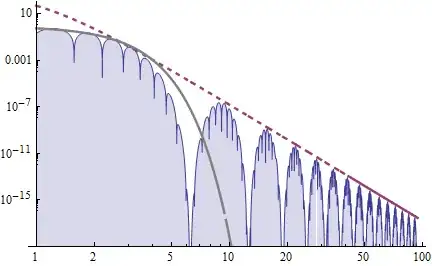I am reading the following part of a book.


 What I do not understand in Sample 3 is that why $F_M(m)$ is not the likelihood function. As in sample 2, we produced the probability that $0.9< X < 4$. Similarly, $F_M(m)$ (can be expressed as $F_M(m,\theta)$ can provide the probability of $X_i\le3.5,i = 1,...,5$ for $m = 3.5.$
What I do not understand in Sample 3 is that why $F_M(m)$ is not the likelihood function. As in sample 2, we produced the probability that $0.9< X < 4$. Similarly, $F_M(m)$ (can be expressed as $F_M(m,\theta)$ can provide the probability of $X_i\le3.5,i = 1,...,5$ for $m = 3.5.$
In other words, if I consider all the individual samples independent from each other, I can get likelihood of each sample as follows: $G_i(\theta) = \Phi(3.5-\theta)$ as $-\infty\le X_i\le 3.5$ After this, I can extract the likelihood as follows: $L_3(\theta) = \prod\limits_{i = 1}^5 {{G_i(\theta)}} = (\Phi(3.5-\theta))^5$.
What do I miss? Why is my result different than the book? Should the likelihood $L_3(\theta)$ be unique or my likelihood in above equation is also correct?